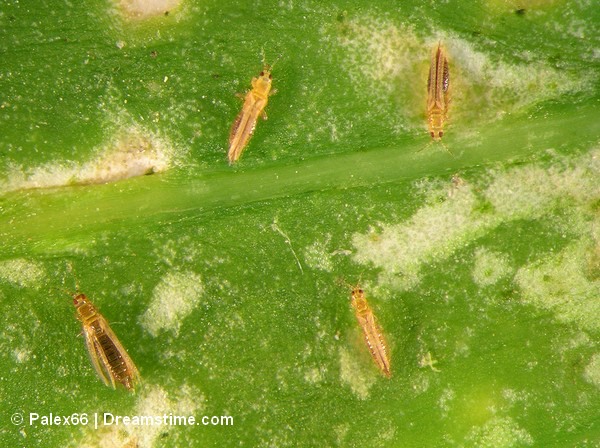Damaging populations of Western flower thrips were observed on geraniums this week. The presence of thrips was confirmed by visual observation of the plants, injury symptoms on the plants and adult thrips on yellow sticky cards used for monitoring pests. This detection illustrates the importance of regular scouting and monitoring of pests in the greenhouse, where Western flower thrips is one of the most common and most notorious pests of bedding plants. They cause feeding damage on plant tissues and can also carry viruses that infect a wide variety of plants and make them unsaleable.

Western flower thrips feed on flowers and foliage by sucking fluids from cells, which often results in feeding scars that reduce the aesthetic quality and marketability of ornamental plants. When thrips feed on developing tissues, affected cells are unable to expand, and mature leaves and petals are distorted. When thrips feed on expanded tissue, affected cells become filled with air, which imparts a silvery appearance. Western flower thrips is also an important vector of tomato spotted wilt virus and impatiens necrotic spot virus.
Biological control of thrips should be started early before populations increase. Commercially available biological control agents include: entomopathogenic nematodes (Steirnernema feltiae), predatory bugs (Orius species) and predatorym mites including Neoseilus cucumeris, Stratiolaepsis scimitus (formerly Hypoaspis miles), and Amblyseius swirskii.
Some of the insecticides available for control of thrips include Aria, BotaniGard, Pylon, Mainspring Overture, Mesurol, and Pedestal. Insecticides with contact or translaminar activity are more effective. Make sure to rotate between different classes to prevent resistance development. For more on insecticides available to control thrips please consult the New England Greenhouse Floriculture Guide.
For more information:
University of Massahussets Amherst
www.umass.edu
